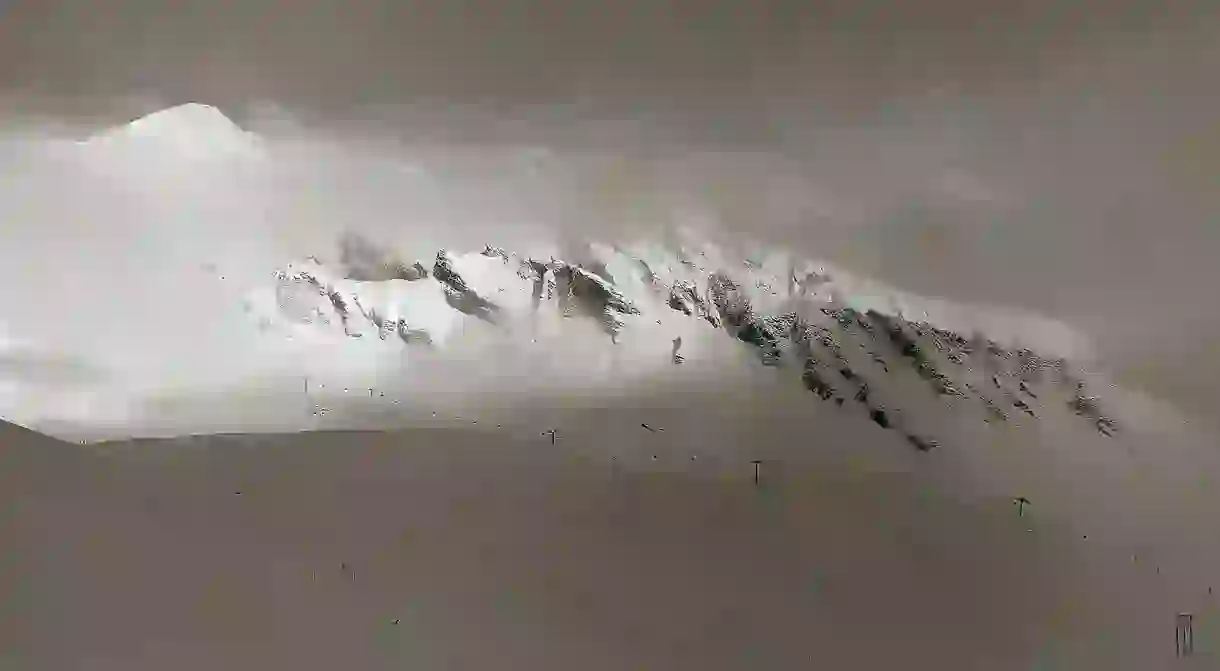A Brief and Controversial History of Heliskiing in Switzerland

Heliskiing is described by some as the most thrilling Alpine experience imaginable; you leap out of a helicopter on to otherwise inaccessible peaks, then plunge down a pristine mountainside at breathtaking speed. However, not all agree with it. For others, heliskiing is reckless, noisy and a carbon-heavy polluter that should be consigned to the history books.
Heliskiing remains a popular sport in Switzerland, despite the practice being banned, or severely restricted, in neighbouring countries. The sport has been around for decades and it first hit the mainstream in the sixties, but the practice of using a helicopter to get to hard-to-reach places had been around in the Alps and in Alaska since the fifties. But opposition on social and environmental grounds led to France outlawing it in 1985. Germany followed, while Austria now restricts the practice to just two sites. But, as this article points out, it is not difficult to circumvent the French ban by starting your heliskiing trip across the border in Switzerland or Italy, if you have the cash, that is.

Mountain Wilderness, an organization based in Bern, is one of those in favour of an outright ban in Switzerland. They argue that the peace and quiet of the mountains, how many envisage the Alps, is well and truly ruined when a thundering chopper overheads by. They point out that there are 42 registered helicopter landing sites in Switzerland, of these more than half fall inside or nearby a protected landscape. Something which is unacceptable, they say.
Opposition to heliskiing has always been around and its own popularity has gone hand in hand with notoriety, growing as time has gone by. In 2000, the conservation organization, Pro Natura, organized a petition to ban the practice, which duly failed. In 2009, around 100 or so protesters scaled a 3,200-metre peak, the Petersgrat in the Bernese Alps, to protest against the sport. This year, plans to operate helibiking operations in the canton of Vaud have garnered more opposition.

The unrelenting march of climate change, which scientists already fear will melt Switzerland’s glaciers and majorly disrupt skiing season as snow retreats to higher and higher levels, forcing low altitude resorts to close their doors, is another factor to consider. Fuel hungry sports, like heliskiing, opponents say, are the dirtiest and most extravagant face of an industry that is hastening its own demise.
Those against banning heliskiing point out that helicopters are part and parcel of living in the Alps. They are needed during mountain rescue operations and are used to deliver supplies to inaccessible areas in winter. Around 15,000 flights take place in the Alps every year and it’s argued that banning the practice of heliskiing wouldn’t make much of a dent in that number. There is also the not inconsequential economic boost provided by the sport to consider.
It’s clear the history of heliskiing in Switzerland is one shrouded in controversy and the story has yet to reach its conclusion as the country is still in the process of weighing whether its great costs are negated by any benefits. But as long as there are those who pay for the sport, there will be those who provide it.













